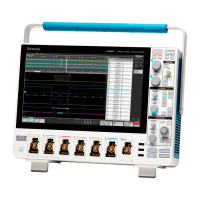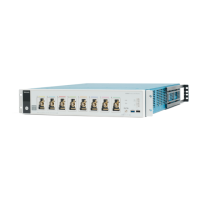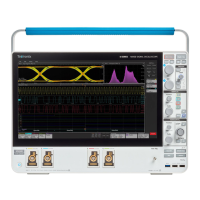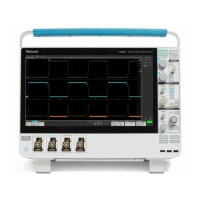Advanced triggering
You can check the advanced trigger status in the trigger menu. The menu indicates the trigger type and then shows sources, levels, or any
other parameters that are important for the particular trigger type.
Triggering concepts
User selected trigger conditions are used to capture waveforms for measurement and analysis.
The next figure shows how triggers fit into the overall instrument operation.
Trigger helps you to capture meaningful waveforms to display on screen. This instrument has simple edge triggers as well as a variety of
advanced triggers.
The trigger event
The trigger event establishes the time-zero point in the waveform record. All waveform record data are located in time with respect to that
point. The instrument continuously acquires and retains enough sample points to fill the pretrigger portion of the waveform record (that part
of the waveform that is displayed before or to the left of the triggering event on screen).
When a trigger event occurs, the instrument starts acquiring samples to build the post-trigger portion of the waveform record (displayed
after or to the right of the trigger event). Once a trigger is recognized, the instrument will not accept another trigger until the acquisition is
complete and the holdof
f time has expired.
Trigger on a pulse width event
Pulse-width triggering triggers the oscilloscope when a signal pulse width is less than, greater than, equal to, or not equal to a specified
pulse width. This trigger is useful for digital logic troubleshooting.
To trigger on a pulse width event:
1. Double-tap the Trigger badge to open the Trigger configuration menu.
2. Tap Trigger Type and select Pulse Width. See Pulse Width Trigger configuration menu on page 214.
3. Tap Source and select the trigger source.
Advanced triggering
2 Series MSO MSO24 and MSO22 79
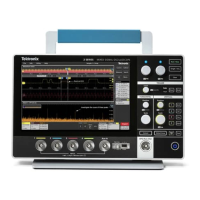
